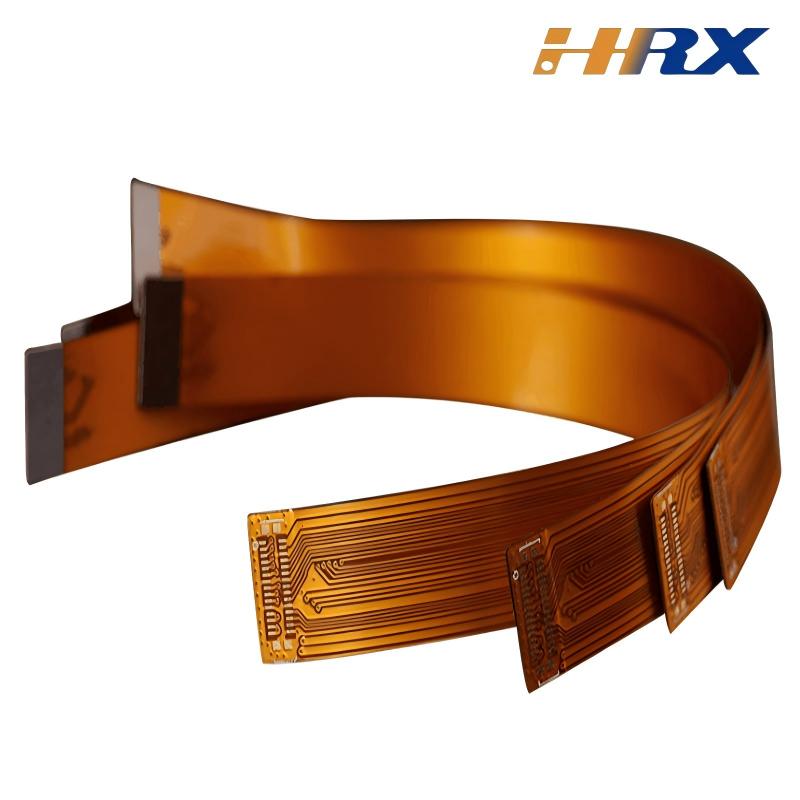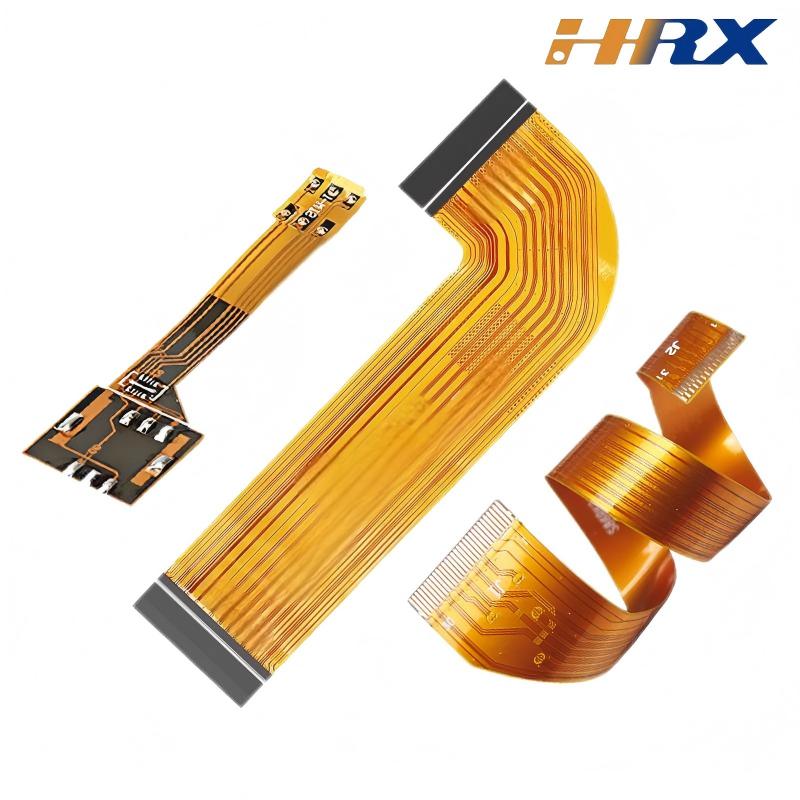Search
Critical Insights in FPC Manufacturing Technology: Design, Production, and Quality Control
- Jul 21,2025
-
Share
Flexible Printed Circuits (FPC) have become the backbone of modern electronics, enabling innovation in compact, lightweight, and shape-adaptive devices. From wearable tech to automotive electronics, their ability to withstand dynamic flexing and conform to tight spaces makes them irreplaceable. However, mastering FPC manufacturing technology requires precision across design, production, and quality inspection. This blog dives into the key considerations in each phase, with insights from Shenzhen Huaruixin Electronics Co., Ltd. — a leading FPC&PCB&rigid-flex PCB ODM/OEM manufacturer with decades of expertise and state-of-the-art manufacturing facilities.

FPC Design: The Foundation of Reliability
FPC design is a blend of engineering precision and material science. Overlooking critical details here can derail even the most promising projects.
Material Engineering is non-negotiable. The core substrate, typically polyimide (PI) for its high-temperature resistance (up to 260°C) and dielectric strength, must align with the application’s mechanical and electrical demands. Copper clad laminate (CCL) thickness (from 1/3 oz to 3 oz) impacts current-carrying capacity, while coverlay materials (PI or PET) need optimal adhesion to prevent delamination. Shenzhen Huaruixin Electronics excels here: their engineering team specializes in matching substrates, adhesives, and coverlays to project requirements, leveraging years of data on material performance in diverse environments — from high-humidity industrial settings to low-temperature medical devices.
Flex Zone Optimization is critical for durability. Dynamic flex areas (subject to repeated bending) require stricter design rules than static flex regions. Trace routing in flex zones must avoid sharp angles; 45° or rounded corners reduce stress concentration. The minimum bend radius, calculated as 10–15x the total thickness of the FPC, is a golden rule — Huaruixin’s DFM (Design for Manufacturability) experts often refine this based on layer count (single-sided, double-sided, or multi-layer FPC) to ensure 10,000+ flex cycles without copper fatigue.
Stiffener Integration balances flexibility and structural support. Stiffeners (FR4, aluminum, or stainless steel) reinforce areas for component mounting or connector attachment, but their placement must avoid interfering with flex zones. Huaruixin’s in-house design team uses advanced simulation tools to test stiffener geometries, ensuring they enhance, not hinder, the FPC’s functional integrity.
FPC Production: Precision in Every Process
FPC production demands tighter tolerances than rigid PCBs, given their delicate substrates and fine-pitch traces.
Laser Drilling & Etching are make-or-break steps. For microvias (≤0.15mm) in high-density FPCs, laser drilling ensures precision and reduces damage to the polyimide substrate. Etching parameters — including chemical concentration, temperature, and dwell time — must be calibrated to maintain trace width accuracy (±0.01mm) and avoid undercutting. Huaruixin’s automated production lines, equipped with real-time process monitoring, achieve consistent etching results even for 5μm ultra-thin copper traces.
Lamination & Coverlay Bonding require controlled environments. Multi-layer FPC lamination relies on precise pressure (1–3 MPa) and temperature (180–220°C) profiles to ensure interlayer adhesion and minimal voids. Coverlay lamination, critical for protecting copper traces from abrasion and corrosion, demands bubble-free bonding — Huaruixin uses vacuum lamination systems to eliminate air entrapment, meeting IPC-2223 standards for flex circuit construction.
Solder Mask Application for FPCs differs from rigid PCBs. UV-curable solder masks must withstand flexing without cracking, so material elasticity is key. Huaruixin’s R&D team has tested over 20 solder mask formulations to identify those that balance adhesion, chemical resistance, and flexibility — a testament to their commitment to long-term reliability.
FPC Quality Inspection: Ensuring Performance & Reliability
Rigorous quality control is non-negotiable in FPC manufacturing, where even minor defects can lead to field failures.
Automated Optical Inspection (AOI) is indispensable for detecting micro-defects. High-resolution AOI systems (5μm pixel size) scan for trace shorts, opens, and misalignments, while 3D AOI checks for coverlay bubbles and copper protrusions. Huaruixin complements AOI with manual inspection for flex zones, where subtle cracks might evade automated systems.
Electrical Testing validates functionality. Flying probe testing, ideal for low-volume, high-mix FPCs, verifies continuity, insulation resistance (≥10¹⁰Ω), and impedance (±10% tolerance for high-speed signals). For high-volume production, bed-of-nails testing ensures efficiency without compromising accuracy — Huaruixin’s test engineering team designs custom fixtures to accommodate FPC flexibility during testing.
Environmental & Mechanical Validation guarantees reliability. Thermal shock testing (-40°C to 125°C, 1000 cycles) assesses material stability, while dynamic flex testing (10,000+ cycles at specified bend radius) validates long-term performance. Huaruixin’s in-house lab conducts these tests to ensure FPCs meet automotive (AEC-Q200) and medical (ISO ) standards, depending on client needs.
Why Choose Huaruixin for Your FPC Projects?
Shenzhen Huaruixin Electronics Co., Ltd. stands out as a trusted FPC manufacturer due to its end-to-end expertise — from design support to mass production. As a professional ODM/OEM partner, they combine large-scale manufacturing capabilities with agile responsiveness, making them ideal for both prototyping and high-volume production.
Their team of engineers, with decades of experience in FPC, PCB, and rigid-flex technologies, collaborates with clients to resolve design challenges, optimize production processes, and ensure cost-effectiveness. Whether you need a custom FPC for a wearable device or a high-reliability rigid-flex board for aerospace applications, Huaruixin delivers solutions tailored to your specifications.
If you’re looking for a reliable FPC manufacturing partner, contact Huaruixin today. Visit www.hrxfpc.com to explore their technical resources, or email sales@hrxfpc.com to discuss your project requirements. For industry insights and technical updates, their website is a valuable resource for learning more about FPC design, materials, and manufacturing trends. Let’s collaborate to turn your innovative ideas into high-performance FPC solutions.

Let’s talk! We’ll provide the perfect solution for you!
-
 Huaruixin Electronics mainly produces printed circuit boards as the core business, to provide customers with one-stop solutions for FPC/PCB production, components sourcing and Assembly.
Huaruixin Electronics mainly produces printed circuit boards as the core business, to provide customers with one-stop solutions for FPC/PCB production, components sourcing and Assembly. - WHAT WE DO — PCB Design Solutions — Flex PCB Production — Components Sourcing — FPC&PCB Assembly
- PRODUCTS — Single Sided Flexible Circuits — Double Sided Flexible Circuits — Multilayer Flexible Cirucits — Rigid-Flex Circuits — FPC Assembly — PCB Assembly
- CAPABILITY — FPC Capability — Rigid-Flex Capability — PCB Capability — Assembly Capability
- Copyright © 2024 Shenzhen Huaruixin Electronics Co., Ltd. All Rights Reserved.
- Design By BONTOP


